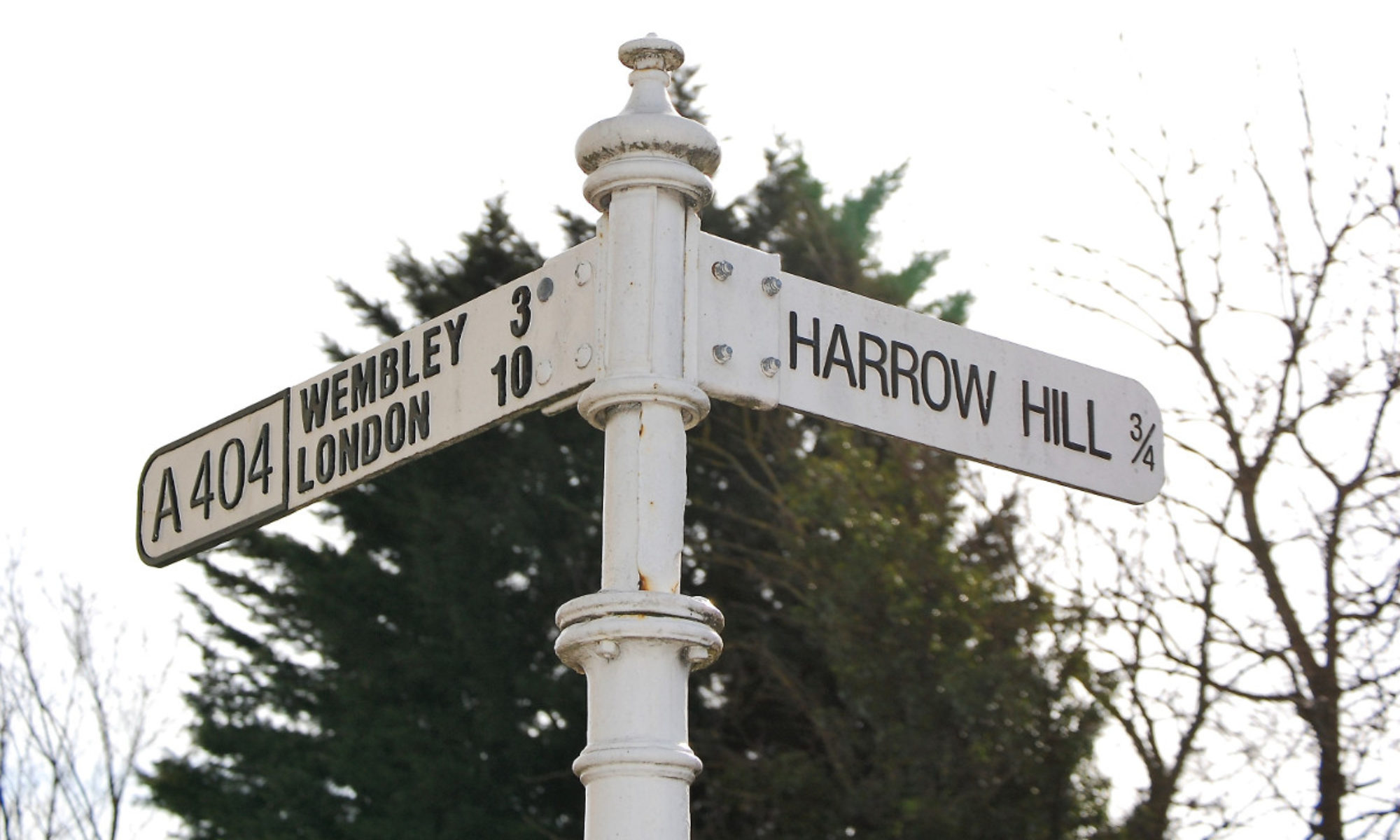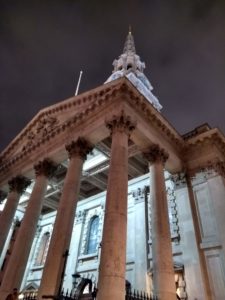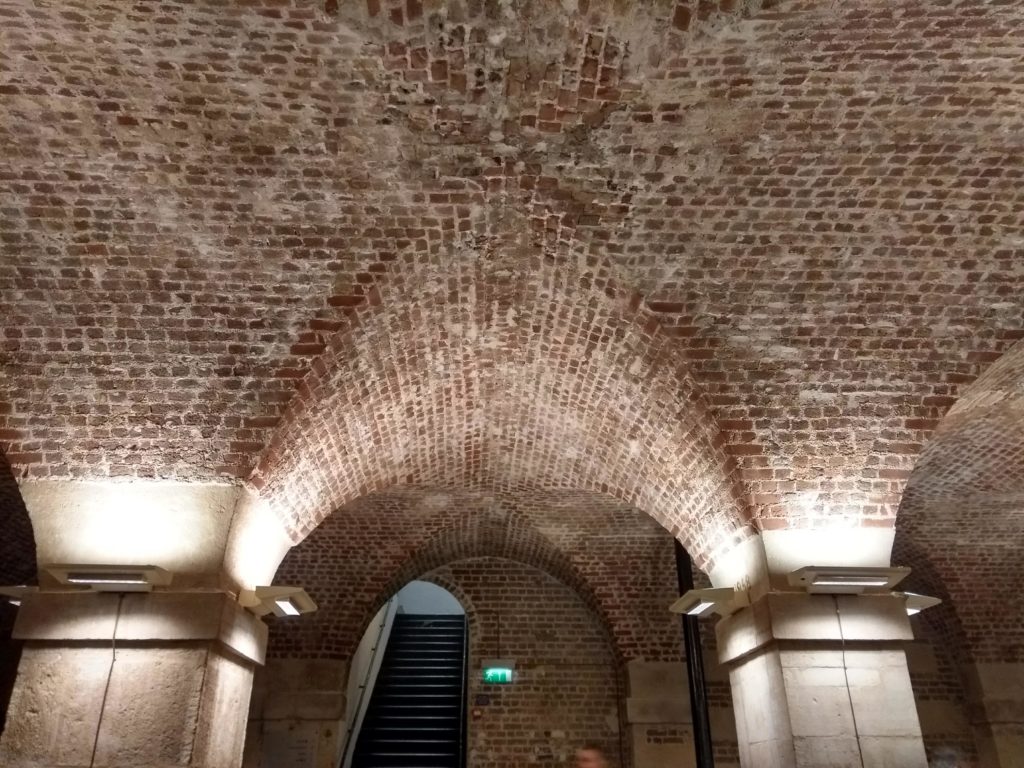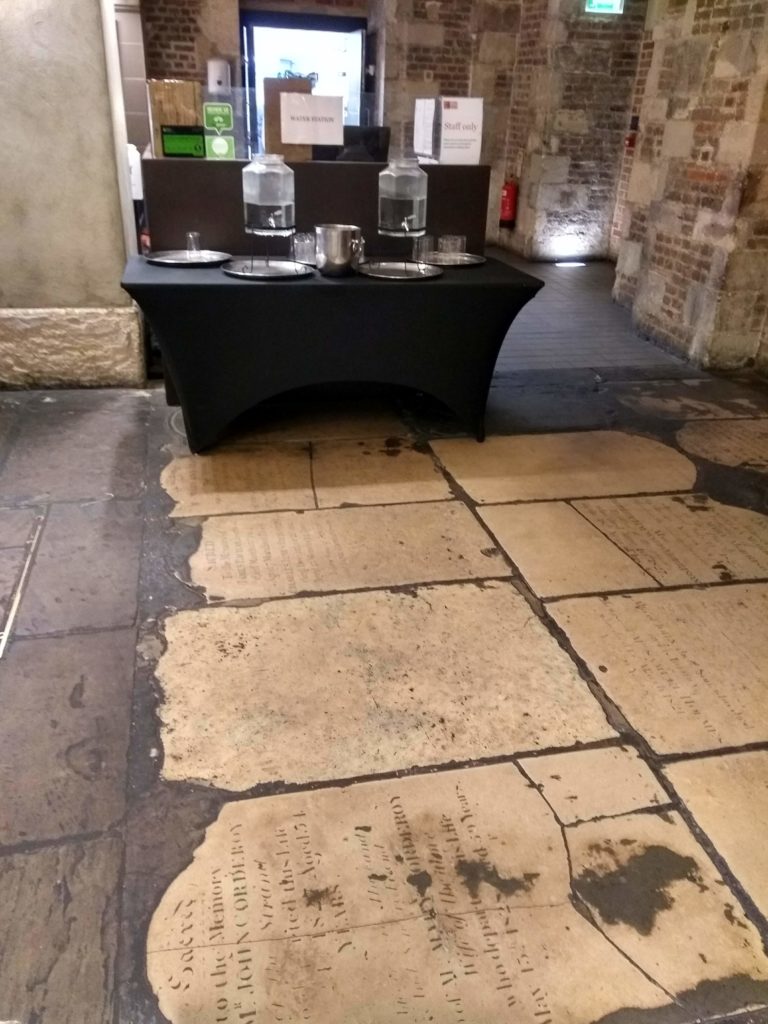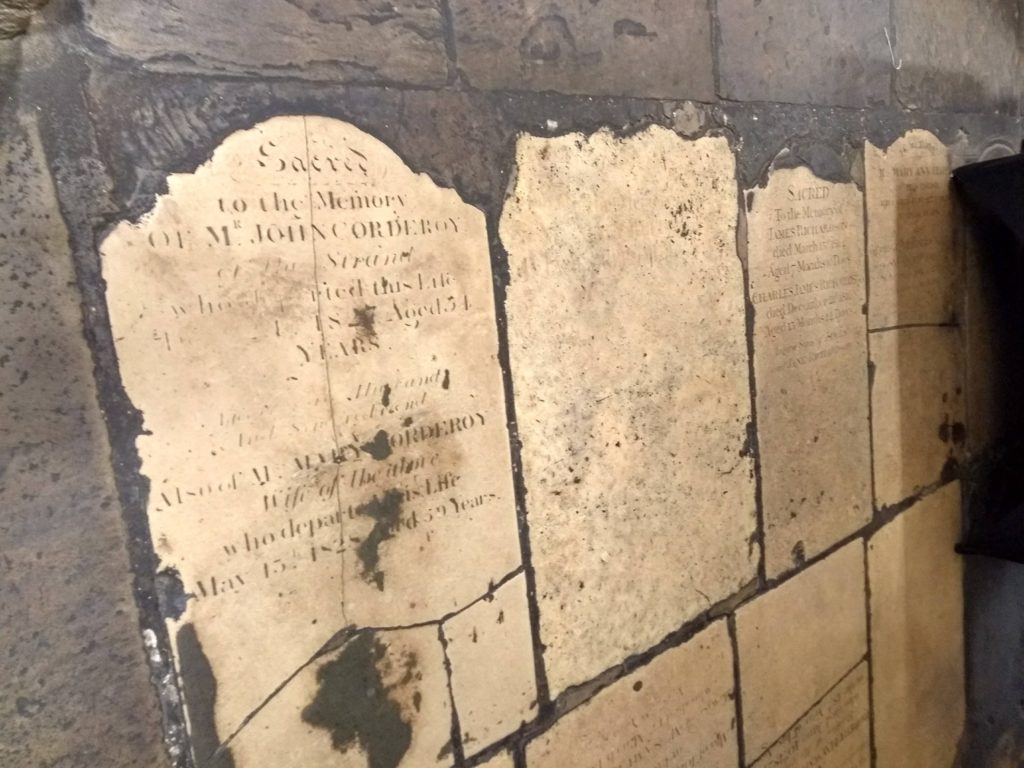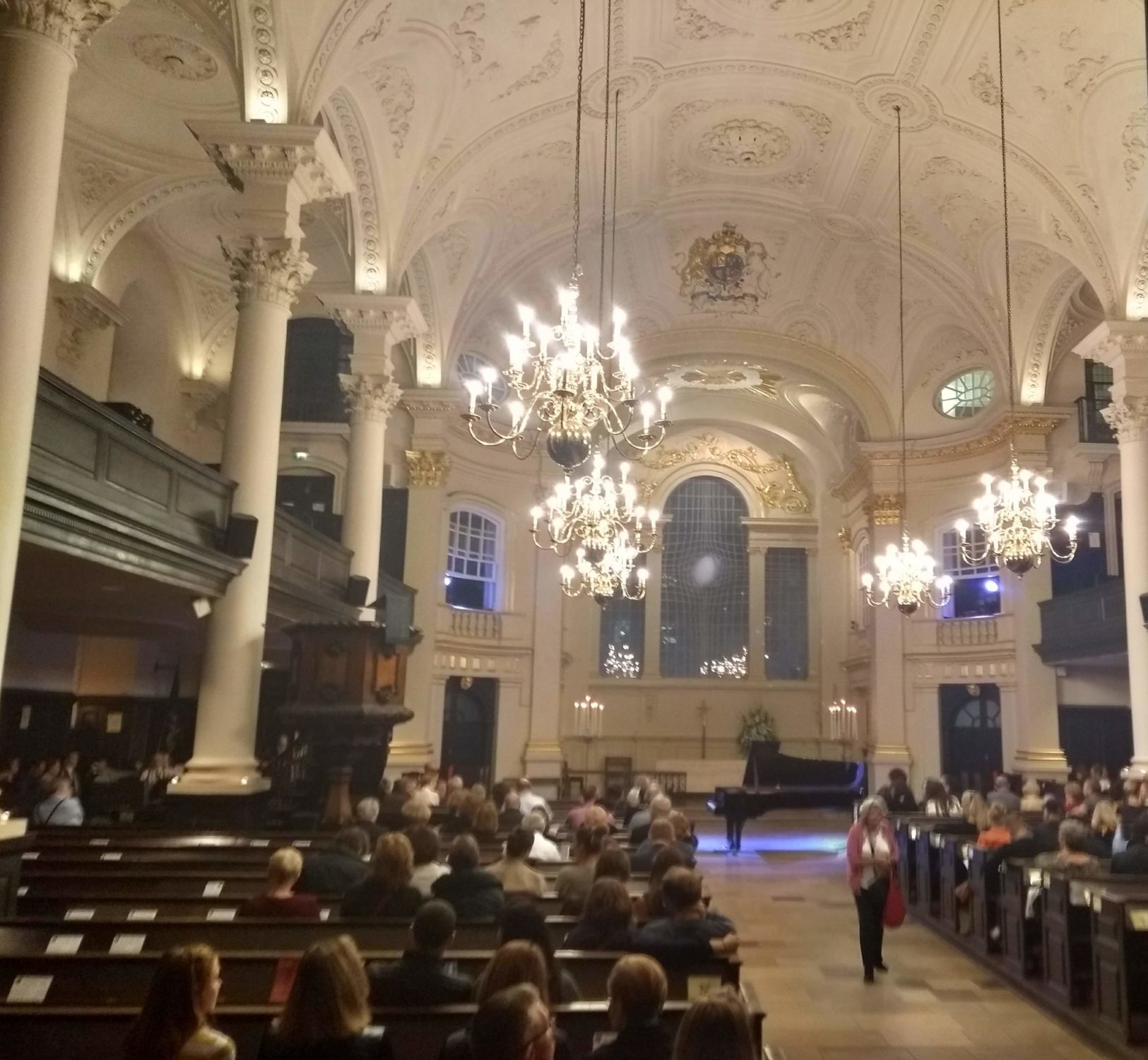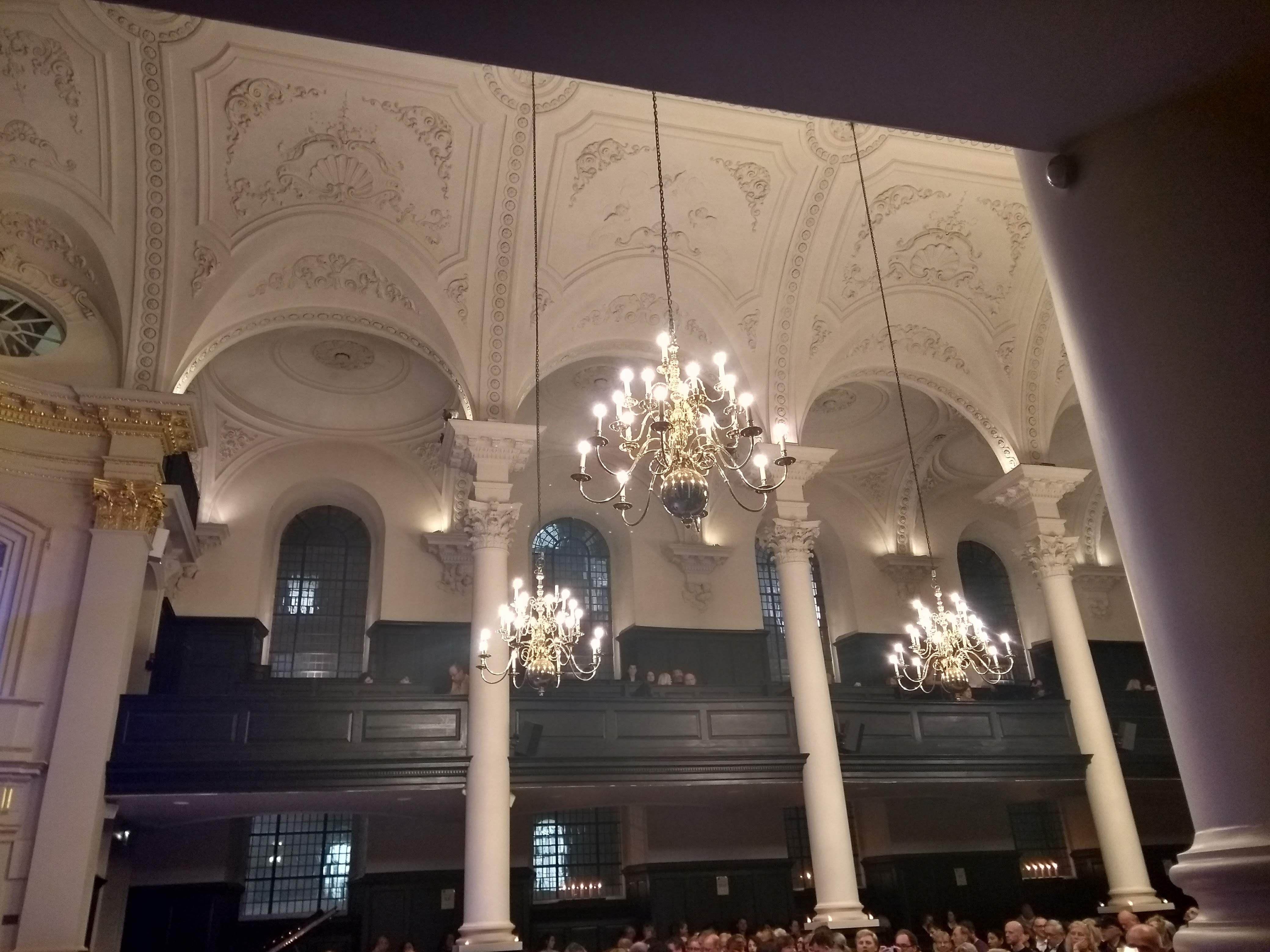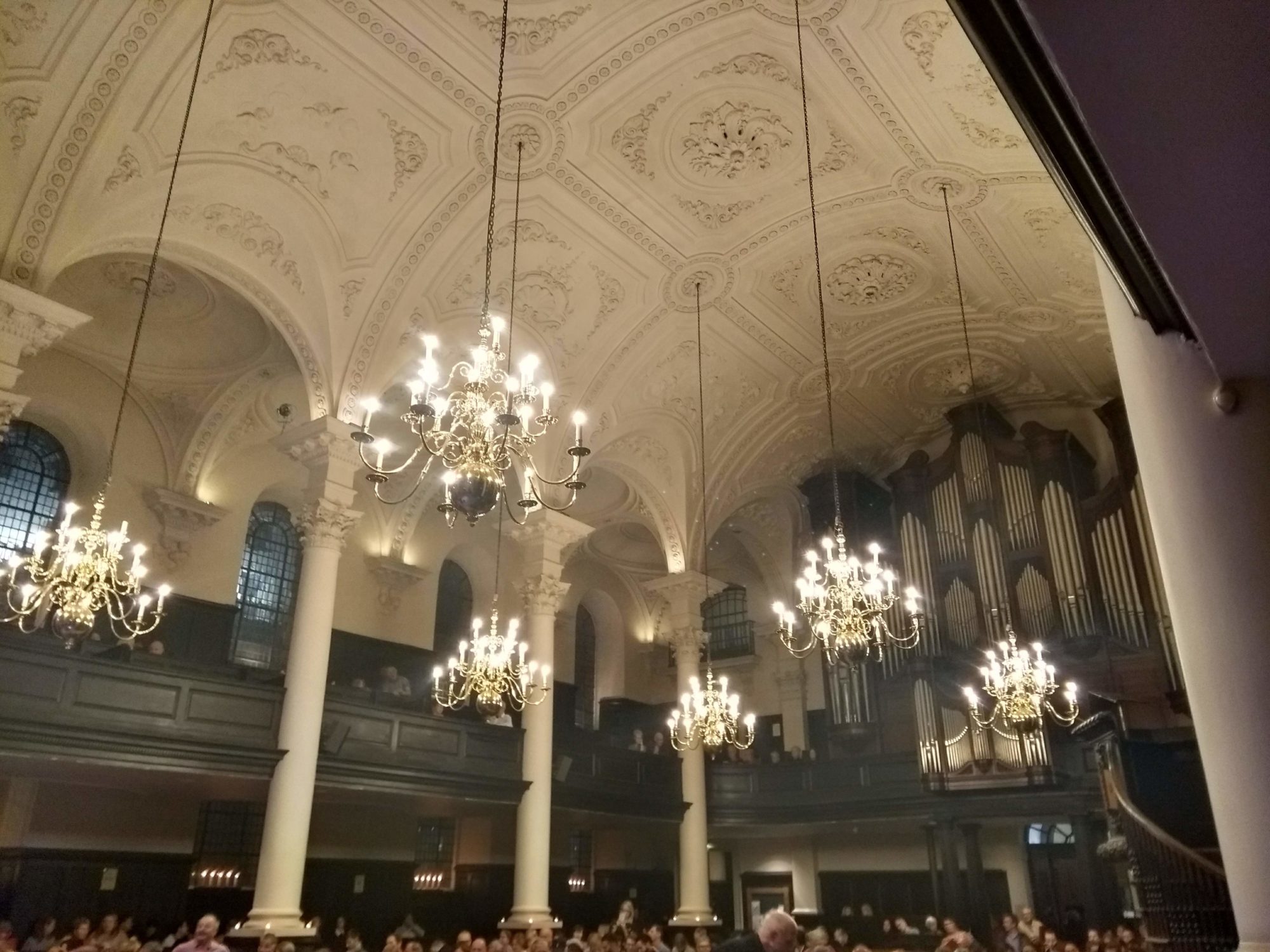Want to maximize your time in London and get off the beaten path to see London as few tourists do? Take a stroll along Regent’s Canal and see a truly unique bookstore, street art, a one-of-a-kind park, Victorian-era structures, canal boats, and locks and iconic Camden Market.
London’s a big city and it’s impossible to see and do it all. You want to pack in as much as you can while you’re here, so planning is essential. Without a plan, you’re likely to waste time and do a lot of backtracking between sights and activities. There’s a better way!
Focusing on different areas each day is a great way to see a lot, keep energy and enthusiasm up and minimize the time (and money) spent moving around the city. This is the first of several geographically-compact outings we’ll post. They’ll include some well-known and must-see locations, but they’ll focus on off the beaten path and less well-known hidden treasures.
King’s Cross St. Pancras Station
This walk starts at King’s Cross St. Pancras Station. If you’re a Harry Potter fan, get there early to beat the crowds for a picture at Platform 9¾ before setting off on the walk. From there, the exit by Caffé Nero leads to Battle Bridge Place, where this walk starts.
From St. Pancras or elsewhere in King’s Cross, exit toward Pancras Road and look for the enormous birdcage with a swing inside (north of Euston Road). Take the pedestrian and cyclists only tree-lined walkway on the right to walk north past the shops. Cross the street at Goods Way (the crosswalk will be right in front of you). Walk over the bridge to cross the canal to Granary Square.
Granary Square & Coal Drops Yard
Ahead is Granary Square, a former canal basin on Regent’s Canal where barges once loaded and unloaded; it’s now a public square with large, choreographed fountains, cafes and restaurants. On the left side of Granary Square is Coal Drops Yard shopping center housed in restored Victorian-era coal drops. Trains would drop their loads of coal into the buildings where it was sorted and then distributed by horse and cart throughout the area. On the right side of the Square is House of Illustration, Canopy Market and a few more shops and cafes.
If you’re there during the day Friday through Sunday, you can browse the market. For a simple budget meal, Waitrose sells sandwiches and salads for an impromptu picnic on the square.
House of Illustration is in front of the market. For a small fee, you can view their current exhibitions of artists and illustrators in three different galleries. It’s a surprising treat for anyone, but a must-see for artists and illustrators.
Word on the Water
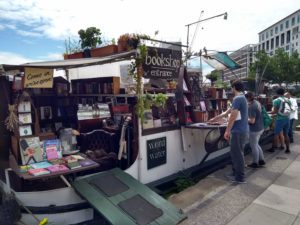
On the canal in front of House of Illustration, there’s a ramp to the towpath where you’ll find Word on the Water, London’s famous book barge. This floating bookstore used to travel up and down Regent’s Canal, but found a home here. Browse the shop, take some pictures, chat with one of the owners who work the shop daily, and support a local bookstore by buying a book to read next time you’re on the tube.
St. Pancras Lock & Gasholder Park
Stay on the towpath and walk west (under the bridge you crossed earlier); just around the corner is St. Pancras Lock. If you’re lucky, you’ll be able to watch a boat navigate through the self-service lock. Adjacent to the lock on the far side of the canal, there’s a large, red-brick, Victorian water tower that once supplied water for steam locomotives at St. Pancras Station.
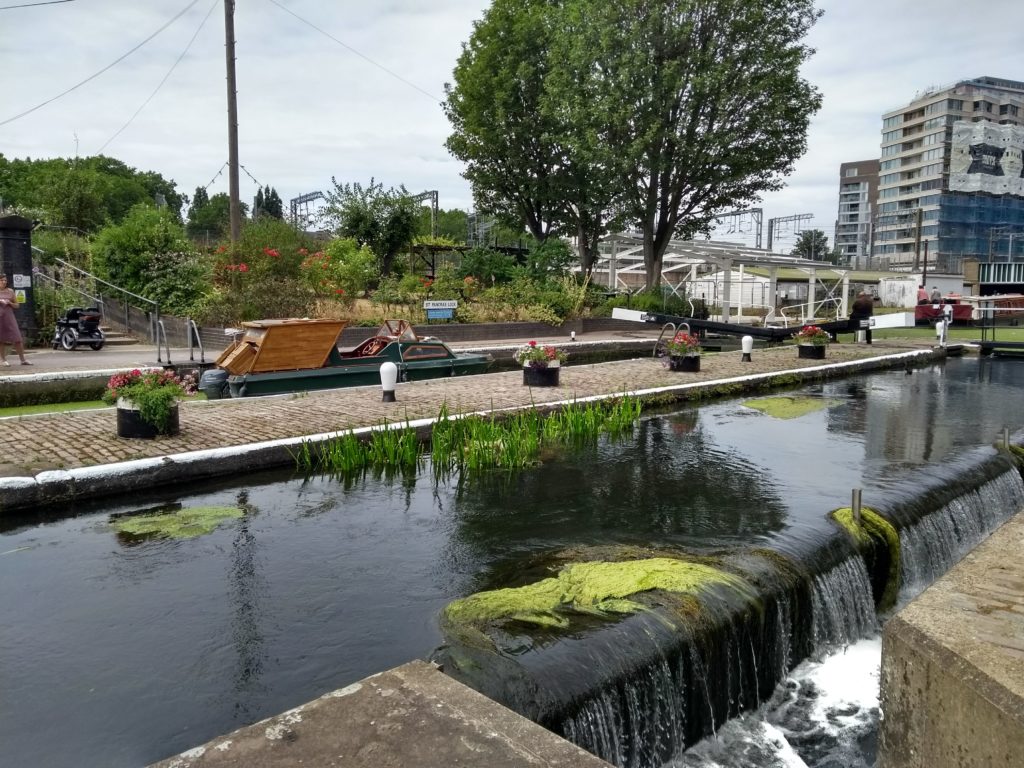
St. Pancras Lock in use 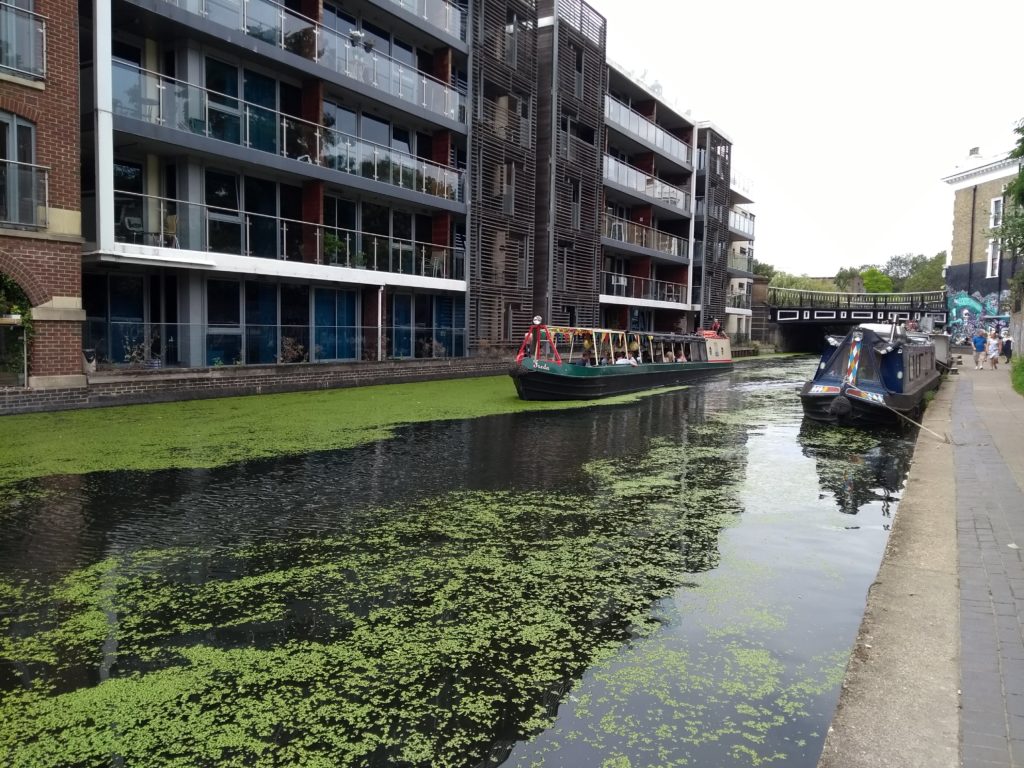
Party boat on Regent’s Canal
Keep walking west past the lock, and you’ll see Gasholder Park on your right. You can’t miss the large cast-iron structure that is the park’s dominant feature. The cast-iron frame was originally on the opposite side of the canal where it was part of a gas storage facility erected in the 1850s that remained in use through the late 20th Century. During redevelopment of the area, it was removed, restored and reconstructed in this newly built park. Next to the park are three more restored Victorian cast-iron gasholder guide frames giving architectural interest to the recently built Gasholders apartments.
Continue along the towpath until you reach the stairs for Camden Road (look for Costa Coffee). Along the way, look out for small pieces of street art and enjoy the variety of canal boats moored along the route. Also, watch out for cyclists on the sometimes-narrow path.
The walk from Word on the Water to Camden Road is less than a mile and should take about 20 minutes, depending on how often and how long you stop to look at things along the way.
Camden Town & Market
At the top of the stairs, turn right and walk into Camden Town, known for its counter-culture scene and nightlife. Its streets and buildings sport stunning street art, and its markets are known for fashion, food and curiosities. Follow this route through the street art and fun and funky shops of Camden Town to reach Camden Market:
- Right on Kentish Town Road (in front of Camden Town Underground Station)
- First left onto Buck Street
- Right on Camden High Street
- Walk over the canal (and Camden Lock) to the market on your left
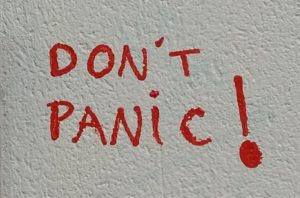
Camden Market is actually a few adjacent markets that started as a small Sunday market in the early 1970s. It’s now a mix of traditional market stalls and permanent buildings operating almost all day every day (individual business hours vary). Stroll around and enjoy people watching, shopping, and numerous world-food options. If you’re an Amy Winehouse fan, visit her statue on the far side of the market at 407 Chalk Farm Road.
End Walk at Camden
If you’re ready to end your day, exit the market onto Chalk Farm Road/Camden High Street and walk to either Chalk Farm (left turn on Chalk Farm Road) or Camden Town (right turn on Camden High Street) Underground Stations, both are on the Northern Line.
If you’re hungry for more and the weather is cooperating, buy food and drink to picnic on nearby Primrose Hill and enjoy a spectacular view of London.
Primrose Hill
Follow this route to reach Primrose Hill from Camden Market:
- Go back across the bridge you crossed before the market and return to the canal towpath.
- Walk alongside the lock continuing west until you reach Gloucester Avenue (immediately after you walk under the large rail bridge).
- Exit the towpath and turn right on Gloucester Avenue.
- First left on Princess Road.
- Walk to Regent’s Park Road, there’s no sign, but look for a church on the corner and it’s bigger, busier street with a zebra crossing.
- Cross at the zebra and turn right to go north.
- The entrance to the park is one-tenth of a mile up Regent’s Park Road at Albert Terrace. Walk up the hill and enjoy the view and your picnic.
End Walk at Primrose Hill
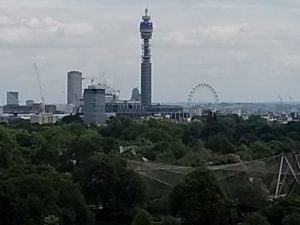
After enjoying the view and picnicking, the closest tube station is Chalk Farm Road, which is a half mile away. The shortest route is to walk east (left when facing the London skyline) down the hill to Regent’s Park Road and go left, walking away from the park. Cross the bridge over the tracks, stay left on the other side and turn right on Adelaide Road. The station will be just ahead on the left.
If you do the walk, please come back and leave a comment to let us know how it went and what your favorite sights were. Have a suggestion for another walk? Leave a comment.
